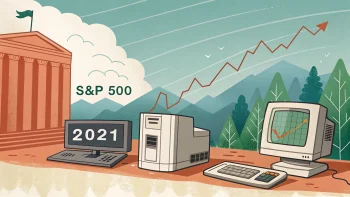From helping you build a credit history and offering liability protection to entitling you with bags of rewards – credit cards are, indeed, of thousand utilities. If you are asked about some common benefits of credit cards, you will probably refer to the free checked bags when flying with a partner airline or discounts at your favorite departmental store.
However, do you know your credit card can award you more than what you already know? Most reputed credit card brands equip their users with a range of additional and lesser-known benefits. Leveraging them may allow you to save significantly. Curious to know about them? Read on as this article explores them all!
Table of Contents
Toggle10 Lesser-Known Benefits of Using a Credit Card
Let’s delve deeper and find out if you have access to the following benefits on any of your credit cards.
1. Price Protection
Generally, most credit card companies offer this little-known yet common feature. Price protection enables you to get a refund if you buy an item with a specific card and its price drops within a particular period. The said period usually ranges from 30-60 days from the date of purchase. However, a few cards allow you to file the claim within nine days.
If you want to get a refund using your credit card’s price protection feature, it’s mandatory to file a claim with your credit card provider. In addition, you need to present a document or evidence that shows the new and decreased price. For instance, you can attach a copy of a printed or snapped advertisement that reflects the same item and its reduced cost.
However, it’s worth keeping in mind that every credit card company may have different program stipulations. There may be refund limitations. For example, some providers may limit your annual refund eligibility to $100 per purchase or $2000 per year. On the other hand, some providers may not include online purchases in their price protection offer.
Besides, internet auctions may not be eligible for price protection. Moreover, you may not be entitled to a price protection offer if your purchased item is found at a discounted price during closeout or liquidation.
Price protection doesn’t always have to be an automatic procedure. Sometimes, the cardholders may specifically register items that would be covered by the service. This way, the credit card provider can oversee the price changes and warrant a refund.
On the other hand, credit card providers may highlight items for their price protection program. This way, the provider may encourage you to use your card frequently as more purchases increase the opportunity for returns.
2. Roadside Assistance
Various credit card issuers offer roadside assistance, which may help you tackle situations like flat tires or dead batteries. The best part is you don’t need a AAA membership to gain access to this prerequisite if your provider offers the perk. Roadside assistance refers to a specific service that helps you deal with roadside emergencies like mechanical failure, running out of gas, etc.
Also known as roadside dispatch, this service is accessible via credit cards, motor clubs, certain insurance policies, etc. With credit cards, you can expect to claim different roadside assistance, including complimentary benefits and pay-per-use services. Usually, travel credit cards with higher annual fees feature roadside assistance as a complimentary benefit that you can use multiple times a year.
On the other hand, the no-fee or low-fee cards may come with the assistance you need to pay for.
What Benefits Are Included in the Roadside Assistance Program?
The common benefits you can expect with the roadside assistance feature may include the following.
- Tire alteration (in case you need an inflated spare tire)
- Round-the-clock lockout assistance (if you get locked out, a professional locksmith will be sent to unlock the vehicle)
- Jumpstarting the vehicle with a battery boost
- Fuel delivery (up to 2 gallons)
- Towing assistance across the United States
You simply need to call the roadside assistance partner. However, you must mention to the service provider that you are a credit card holder so that they can check your account. Remember, some roadside credit card assistance programs may ask you for advance registration. You can review the minute details on your credit card to determine whether you are covered for the roadside assistance service.
3. Extended Warranty Production
This free benefit typically kicks in once your standard manufacturer’s warranty expires. You can add additional years of warranty to your coverage through these extended warranties. Let’s say your coffee maker stops percolation suddenly, and its original warranty has expired. In this scenario, your credit card’s extended warranty may help you out.
This additional coverage is offered through a credit card network, and you can use them for eligible purchases made with your credit card. This free benefit applies to items that already feature a manufacturer’s warranty. Generally, the terms and conditions of the coverage remain identical to the original manufacturer’s warranty.
Therefore, if your product’s warranty is applicable for parts and a certain amount of labor charges, the same would apply to your credit card’s extended warranty. Besides, your extended warranty may sport a few other conditions. For instance, there may be some specific cap per claim or per account, usually in line with the standard amounts in the marketplaces.
What Can You Expect Your Extended Warranty to Cover?
Extended warranties may cover any item that sports a manufacturer’s warranty. However, there may be exceptions. The warranty coverages may vary depending on the network you are using. However, they will typically cover an item for a particular time up to a dedicated dollar amount. To understand this better, you should refer to your credit card’s benefits guide or contact your provider’s customer service.
The most common items covered by a credit card’s extended warranty include home appliances, mobile phones, electronics, and other durable consumer goods. On the other hand, the coverage usually excludes used or rented items, motorized vehicles, computer software, real estate products and services, medical equipment, etc. Furthermore, your credit card’s extended warranty may not cover generic wear and tear and product alteration-induced damages.
To file a claim, you must produce your manufacturer’s warranty and store receipt. Then, you need to register the product, as it makes the paperwork process hassle-free when filing a claim. Next, you should reach out to your card’s benefits administrator through the card issuer’s official website or phone.
Once you are done with filing, you need to produce the supporting documents, which may include the purchase receipt. This statement shows the transaction, a copy of the manufacturer’s warranty, etc. Once the administrator verifies your claim, you will be guided through the next steps. With credit card extended warranties, you can save a big chunk of money on repairs and replacements.
4. Purchase Protection
Credit card purchase protection generally applies to purchases you make with your card for a specific time. If you have this coverage, you can expect reimbursement for a purchased item or get a replacement in case of damages and theft. The span usually ranges from 90-120 days. However, purchase protection is never uncapped.
Usually, you need to abide by a per-claim limit, an annual limit, or a lifetime limit. Moreover, your provider can exclude some specific purchases from protection coverage. They may include used or pre-owned items, collectibles, antiques, motorized vehicles, computer software, government-confiscated items, etc.
Using Credit Card Purchase Protection
When it comes to using credit card purchase protection, your provider extends the coverage when you use the card to pay for the item you want to be covered. Besides, you may be eligible for coverage if you have used the rewards earned for using your credit card.
If you pay for an item using your credit card, reward points, or a combination of the two, the purchase automatically becomes eligible for protection. To file a claim, you can refer to your provider’s official website or call them.
5. Cell Phone Insurance
A handful of credit cards offer cell phone protection. This insurance usually comes free and may help you save on the cost of a phone repair. Generally, your card provider will require you to pay your cell phone bills using your credit card to access this benefit. Once you submit your claim, the dedicated insurance will reimburse you up to a specific amount of eligible costs associated with the theft or damage of your smartphone.
Like any other type of insurance, you must adhere to an appropriate deadline to make a claim. Besides, you must provide proof of the damages and pay a deductible. The common inclusions of credit card cell phone insurance may include lost phones, cosmetic damage, rented or prepaid phones, accessories except for the standard battery, fees, taxes, etc.
Usually, major credit card providers offer coverage for stolen and damaged phones for the primary phone number and the additional line on the same plan. However, some providers may also offer secondary insurance that applies after the primary provider covers its share of losses. Therefore, you can claim with any other insurance you already hold and then use your credit card’s coverage to cover the remaining amount.
6. Return Protection
This is an added benefit of purchasing something with a credit card. Usually, return protection enables you to return purchases even if your retailer doesn’t allow returns. In case the retailer allows returns, credit card return protection may extend the duration of returning the item. However, not all credit card issuers offer this dying perk.
Moreover, the return request methodology is a bit cumbersome, and it may vary depending on the card provider and the purchase. Besides, some purchases may be excluded from return protection. For items eligible for a return, you will have to produce a credit card statement showing the purchase, the original purchase receipt, and documents stating you have already tried returning the purchase to the original retailer.
Different users may have different guidelines for credit card return protection. There may be a specific return eligibility window ranging from 60-90 days. Moreover, there may be limits per return or returns per calendar year. Usually, personal hygiene products, jewelry, live animals, books and magazines, damaged items, medical equipment, batteries, and computer software are not eligible for return protection.
7. Interest-free Purchases
Interest rates may often look dreadful to many cardholders. They often work like the extra cheese on the cake you are forced to accept if you want it. However, some credit card providers allow you to dodge those troublesome interest rates. You may apply for an 0% introductory annual percentage rate (APR) card.
Generally, this offer allows you to buy big-ticket items, and you can expect a longer 0% APR period. However, you need to use the scheme carefully. After making the first transaction, you should refrain from using the card further until you clear your previous due.
8. Trip Cancelation Insurance
Let’s face it – sometimes travel insurance doesn’t work out! For instance, you get your trip delayed or canceled due to bad weather or personal circumstances, and your airline refuses to refund your ticket. In such scenarios, your credit card travel insurance may offer some support. There are providers who equip their cards with some sort of travel insurance.
Leveraging this interruption and cancellation insurance, you can receive coverage whenever you use your card for paying specific travel expenses. This is sometimes applicable even for non-refundable tickets.
FAQs
1. What are some good credit card tricks?
Credit cards can turn out to be the most rewarding means of making purchases when you know the tricks to handle them. Some smart credit card tricks may include checking on card-linked offers, moving your date to be on track, maintaining strategic card combinations for amplifying rewards, and keeping an eye on the balance alerts.
2. Why do you get so many offers on your credit card?
Credit card issuers believe that the offers will help them retain more of your attention. They usually curate offers depending on your credit score. For instance, if you have poor credit, you are more likely to get preapproved offers which will help you improve your credit. On the other hand, good credit holders usually get offers related to rewards.
3. What if you reject a credit card offer?
When you get any credit card offer, you can accept or reject it based on your requirements. However, once you accept an offer, you won’t have the option of declining it. Usually, preapproved offers allow you to enjoy a competitive interest rate, better benefits, and a rational annual fee.
Conclusion
To summarize, credit cards may turn out more worthy than you have ever expected. However, to obtain their best benefits, it’s crucial to keep yourself updated with the latest happenings in the credit card industry. Does your credit card provider offer the additional benefits mentioned above? Check with them today so you don’t miss out on big savings. Good luck!















